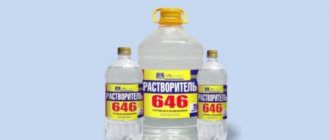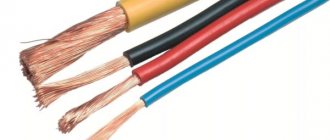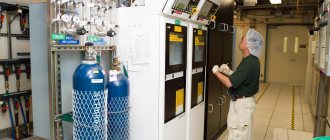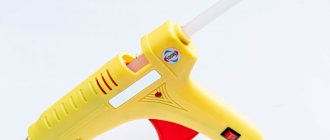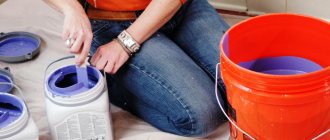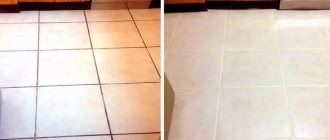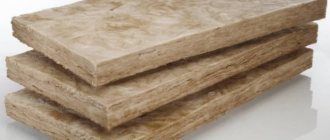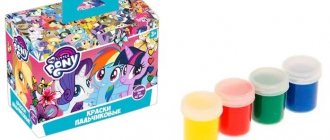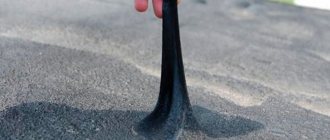Mentions of solvents, their application and use date back to the first half of the fifteenth century, when mankind discovered methods for distilling petroleum and tree resin.
In his daily activities, people are constantly faced with the need to use solvents. In modern production or in everyday life, humanity uses a huge number of different solvents, the application and use of which depends on the field of activity and the need to perform a certain type of work.
The sections of the article contain photos of solvents of different types and purposes. In the process of using them, a person constantly faces questions: “Which solvent is better for performing work?”, “Which solvent is safer?”, “Which solvent can perform the required amount of work faster and with better quality?”...
To find the answer to these questions and many others, you need to know what solvents are and what they represent.
About solvents
Solvents can be chemically in solid, liquid or gaseous form. They have the ability to dissolve solid, liquid and gaseous substances in certain volumes and appropriate temperatures. These states and their capabilities determine the areas of their application in everyday life and at work.
Often in everyday life the words solvent and thinner are used as synonyms, but this is a mistake. Because solvents and thinners have different properties in their composition. By adding a thinner to the paint mixture, you can only achieve a change in its volume.
The solvent directly affects the substance and improves its chemical composition, improves its paint properties, giving it the best fluidity for use.
In everyday activities, solvents are used for:
- diluting paints and varnishes to the required consistency;
- cleaning clothes and other surfaces from grease stains;
- cleaning tools after painting work.
According to classification, solvents are divided into types:
- organic (integral, basic) basis;
- inorganic (not natural formation) base.
Plasticizers
Plasticizing additives are used in paints and varnishes to give them elastic properties during operational processes.
They promote uniform mixing of all the constituent elements of the paint and varnish material, lower the temperature during technological processing of the product, and increase the frost resistance of polymer compounds. Certain types of plasticizing additives improve the fire, light and temperature resistance of polymer particles. Plasticizers must meet several requirements in order to have sufficient compatibility with polymer compounds.
- Low level of evaporation.
- They should not have a smell.
- Be chemically neutral.
- Be able to withstand liquid polymer extracts.
The percentage of plasticizing additives in a paint and varnish material can fluctuate over a wide percentage range in relation to other components. Their quantity regulates the volume of water in the product, gives the paint the necessary parameters of viscosity and density, and increases the adhesion of the material to the surface being treated. At the same time, an excess of plasticizing additives can lead to undesirable thickening of paint and varnish, which will negatively affect their quality.
Base solvents
Organic solvents are the most common type of solvents. They are actively used in the chemical industries and construction, automobile construction and printing for restoration work, manufacturing adhesives, various impregnations, breaking down fatty deposits and cleaning various household items.
This type can be divided into subgroups:
- evaporates quickly;
- moderately evaporative;
- difficult to evaporate.
The first subgroup of solvents includes: gasoline, solvent, white spirit and ethyl alcohol. These are highly flammable liquids when working with which fire safety standards must be observed. They are used for mixing acrylic-based paints, varnishes, enamels and oil paints.
Solvents of medium volatility include kerosene, which is used when dissolving acrylic or oil paints.
Turpentine is a solvent that is difficult to evaporate. They can be used to dilute varnish, enamel and oil paint.
The main disadvantages of these solvents are their long-lasting odor and the formation of explosive vapors in the room. Therefore, recently water-based paints have become increasingly popular.
As a rule, all solvents are highly toxic and have a negative effect on human organs. Ethyl alcohol has narcotic properties; prolonged exposure to a room with a high concentration of vapors of this alcohol can poison the human body.
The room for storing solvent must be well ventilated or equipped with a ventilation system.
Which parquet varnish is better to choose - advice from professionals on choosing varnish and manufacturers’ ratings for 2022Belife spray paint - everything you need to know
Quick-drying, odorless paint for interior work - main types, selection tips and benefits of use
Highly flammable solvents have their own ignition temperature: ethyl alcohol - four hundred and two degrees, turpentine - one hundred and sixty degrees, gasoline - five hundred and sixty degrees.
Representatives of ester solvent types
These include:
- Methyl acetate type of solvent is a quickly evaporating substance.
- Ethyl acetate is characterized by a pleasant odor, rapid volatility and low boiling rate. The solvent has a yellowish tint, rapid volatility and is therefore used when increasing the time interval for complete drying of paints and varnishes.
- Amyl acetates have similar characteristics to butyl acetate, have a distinctive odor, and evaporate slowly.
- Acetone is one of the most toxic types of solvents with a heavy odor, high volatility and flammability.
- A mixture of soluble substances is used to dilute nitro enamels to the desired thickness. They contain esters of complex structure. The quality of the painted layer is affected by the composition of the solvent. In particular, if you add more chemicals to the paint than necessary, the coating will become cloudy. By adding a substance with long volatility, the painted layer will become smooth and attractive in appearance.
- Acrylic solvent is similar to a white liquid with a specific odor, is made on the basis of acrylic and is produced in several versions. Their use largely depends on the type of surfaces being painted, weather conditions and other factors.
- Glue solvent. Sometimes it is necessary to dilute the glue to a more liquid consistency or completely remove it from the surfaces. Some of the best are xylene, acetone or mixtures based on ethyl acetate.
How to choose a solvent?
The basic basis for the manufacture of paint are varnishes or resins that have the properties of forming a liquid substance capable of providing the surface of the product with a protective layer of a certain type and purpose.
When choosing a solvent for paint, it is necessary to select a solvent identical in chemical composition to the substance from which the paint is made:
- White spirit is used to dilute alkyd paints;
- solvent P646 is used to dilute epoxy paints;
- To dilute nitro paints, solvent P647 is required;
- ethyl acetate is used to dilute acrylic mixtures;
- Solvents No. R-4, R-5, etc. are used to dilute polyurethane paints.
Water-based paints are diluted with water accordingly.
Main varieties
Conventionally, solvents can be divided into the following types:
- paint varieties;
- construction nature;
- of a household nature, used to dissolve stains resulting from various fats and similar substances;
- artistic solvents used by artists.
Paint and varnish solvents are organic substances that have a low boiling point. Therefore, thanks to their use, the compositions dry out in a short period of time. Solvent 646 is also the most common.
Among other things, solvents can also be divided into the following types:
- homogeneous type, which contains one substance or a mixture of homogeneous components, a simple example of which is toluene;
- combined type, which contains two or more homogeneous solvents used in certain proportions, a simple example is P-4, which contains a combination of toluene and acetone, with the addition of butyl acetate.
At the same time, combined solvents are distinguished by a greater degree of efficiency.
Solvents for paints and paints
Solvents for paintwork are used, if necessary, to dilute the outdated substance and return it to its original state, to remove the previous layer of enamel (paint) from the product being painted. Existing solvents differ in composition and strength of interaction with coatings.
Paint solvents are made on a water or alcohol base. Water-based solvents are not able to interact with many types of paints. Their positive side is their ability to evaporate quickly, which affects the drying speed of the paint material.
Alcohol-based solvents are capable of entering into chemical reactions with paintwork and will even restore the properties of dried enamel (paint). However, it must be remembered that a large amount of this solvent increases the drying time of the painted surface.
One of the most common is white spirit. It is affordable and its technical characteristics can satisfy many needs, but, unfortunately, it will not solve all problems. In some cases, there is a need to use stronger solvents.
Alcohol based solvents
Methanol is a colorless, odorless substance. When combined with water it creates a homogeneous liquid. Methyl alcohol belongs to the category of highly toxic substances.
- Ethyl alcohol has a pungent odor and is highly flammable.
- Adding butyl alcohol to nitro paint promotes the formation of a smooth structure of the painted surface.
- Ethylene glycol is a substance with a thick, odorless consistency.
Works effectively with nitro enamels. Surfaces painted with paints and varnishes containing ethylene glycol are shiny and smooth.
Solvent R 646
Among the huge number of solvents used in everyday life and production, P 646 is in great demand; it can rightfully be considered a universal solvent. It is used in construction and car painting. It is distinguished from other solvents by its versatility of use and good technical characteristics. It is suitable for almost all types of paints, enamels, primers and other paintwork materials.
Paints diluted with it dry quickly and, when painted, create a smooth and shiny surface covered with a protective layer. In addition to diluting paints, it can be used to clean various surfaces from dirt or oil stains.
The achievement of this high-quality state of the solvent was facilitated by a reasonable combination of alcohols, hydrocarbons and esters in its composition. It has a yellowish color and has good volatility.
Disadvantage of the solvent: It is highly flammable, has an unpleasant odor and is very toxic during operation; it requires strict adherence to safety precautions. It is very aggressive, used in small quantities, otherwise it can easily destroy the structure being painted.
Composite solvents - what is their purpose?
Solvents of this type include the following:
- No. 645, is nitrocellulose;
- No. 646, is universal;
- No. 647, suitable for nitro-enamel compositions or nitro varnishes for cars;
- No. 649, suitable for NTs-132k or GF-570Rk trains;
- No. 650, an excellent option for diluting NTs-11 or GF-570Rk car enamels;
- No. 651, an excellent option for oil formulations;
- No. R-4, for polyacrylate or perchlorovinyl compositions, paint and varnish compositions with the addition of vinylidene chloride or vinyl acetate;
- No. R-5, for epoxy or polyacrylate compounds;
- R-6, for compositions of melamine-formaldehyde type, rubber, polyvinyl butyral type;
- R-7, for diluting varnishes under number VL-51;
- R-11, for polyacrylate or perchlorovinyl compositions;
- R-14, for epoxy enamel compositions that are cured using isocyanate hardeners; — R-24, for perchlorovinyl compounds;
- R-40, for epoxy-type compounds;
- R-50, for cresol-formaldehyde or polyvinylbutyral compositions;
- R-55, for epoxy-ester compositions;
- R-189, for polyurethane type varnish;
- R-219, for polyester type resin compositions;
- R-1176, for polyurethane type paint or enamel;
- RL-176, for polyurethane, polyacrylate type compositions;
- RL-277, for polyurethane compositions.
Among other things, this type of solvent can be used to clean surfaces, degrease them, as well as remove paint and varnish residues from brushes or rollers, and wash spray guns.
Photos of solvents
Application
The main function of the solvent is to provide convenience when working with paints and varnishes. Giving the dyes the desired consistency before direct application to the surface allows not only to achieve uniformity of applied layers, but also to ensure high performance characteristics of the coating, in particular - density and resistance to external factors.
Solvents can also be used before starting painting work to prepare the surface - degreasing it and cleaning it from visible contaminants.
In addition, any of the solvents will easily clean working tools - brushes, rollers, paint reservoirs and will help wash away drops of paint that have landed on other surfaces or skin.
It should be noted that each of the paints and varnishes requires the use of its own type of solvent, suitable in chemical composition. If the composition is selected correctly, when the liquids are combined, the mixture will become homogeneous, will not disintegrate during storage, and will be easily applied to the work surface when used.
Difference between solvents and thinners
In everyday understanding, these terms are often considered synonyms. However, solvents, unlike thinners, due to their chemical composition can react with other substances, affecting their structure to dissolve film-forming components. This allows you to change the consistency of thickened paints and varnishes, returning them to a “working” state.
Thinners cannot convert the curing components, but they can reduce the viscosity and change the consistency of the dye. All these substances have a high volatility rate, are flammable and have a strong characteristic odor.
Recommendations for use
Compositions for dissolution in most cases are explosive and flammable substances. You need to work with them very carefully and not allow a large amount of material to accumulate.
Solvent consumption
The consumption of the composition when working with paints is determined by the method of application. The standards are indicated in the product instructions or in the regulatory and technical documentation. Calculations of this kind are the result of laboratory research and testing. It will not be possible to determine the required amount on your own, especially by eye.
For example, to dilute the BT-577 varnish, white spirit, turpentine or solvent are used. If the composition is applied with a brush, 10% solvent is added to the source material, if by airless spraying - 15%.
Precautionary measures
Most mixtures are considered safe. However, when working with them, you should strictly follow safety rules.
- When using odorless formulations, wear a regular mask and gloves.
- If the solution has a strong odor or is toxic, wear a respirator.
- Paints should be diluted in a well-ventilated area or in the air.
- Smoking is prohibited while working.
- Do not leave mixtures near heated objects, switched on electrical appliances, or sources of open fire.
If the solvent gets on your skin or mucous membranes, immediately rinse the area with plenty of water and consult a doctor.
Useful tips
Before use, be sure to read the information on the label.
When purchasing a product, you should pay attention to the recommendations of specialists.
- For home use, it is better to take a solvent with the longest evaporation period. It lasts longer.
- This is a highly volatile composition, so it should not be left open.
- Paints can react unexpectedly even to their “native” solvent. It is better to do a patch test on the paint first.
You need to buy a small volume so as not to waste the composition.
What belongs to the organic group
Due to their properties, compounds from this group have become truly widespread. They are used in the production of painting products. The materials can be used even under aggressive environmental conditions. It’s just that few people are able to immediately understand which substance belongs to which group. But here everything seems complicated only at first glance. The following information will help you understand paint thinners:
- The group with hydrocarbons and their derivatives includes xylene, solvent, turpentine, and refined gasoline. Including such products as Galosha and Nefras gasoline.
- These compounds include a variety of ketones: cyclohexanone, disobutyl ketone, methyl ethyl ketone, acetone.
- Examples of ethers and ethers are: methyl acetate, ethyl acetate, dioxane.
- Finally, the group of alcohols has the following varieties: isopropanol, butanol, ethanol. Each group has its own solvent consumption.
On the video: thinners and solvents - how they differ.
What are the properties used for?
A solvent in chemistry is a substance designed to dissolve other chemical substances in a liquid, solid or gaseous state without changing their formula and composition. Solvents are widely used to remove old enamel from the surface and prepare paints and varnishes for construction and repair work.
When introducing a liquid into a dye that changes its viscosity, it is important to clarify the compatibility of the composition and reagent so as not to spoil the most expensive varnish or enamel.
In fact, water is a natural solvent. Acrylic paint and some emulsions are diluted with it. The category of “diluents” includes organic and synthetic substances used to prepare paintwork materials for work. Based on their composition, there are two- and three-component types of solvents, which differ in chemical formula and ability to effectively dilute dyes to the desired consistency.
According to the formula, chemists also distinguish between alcohols, hydrocarbon solvents and their nitro derivatives, esters, ketones, amides, sulfoxides and some acids. They are classified according to various physicochemical properties, including volatility (evaporation rate), viscosity and pungent odor.
When solvents are mixed in a certain proportion, explosive mixtures are obtained.
Acrylic paint and some emulsions are diluted with water.
Many paint and varnish offerings on the modern market require liquefaction before use. This has its own advantage - the liquid base is removed from their composition in order to increase the percentage of useful substances in the total mass. The list of the most popular substances includes:
- White Spirit;
- Benzene;
- Ammonia;
- Turpentine;
- Ethanol;
- Petrol.
Having understood what a solvent is in chemistry, it is important to consider that these substances are used not only for dissolving varnish or paint. They replace specialized solvents, having similar properties in relation to dyes. With substances from this list you can make paintwork thinner and remove paint stains from the surface and working tools.
Many paint and varnish offerings on the modern market require liquefaction before use.
Popular products from our catalog
The cost of most popular solvents is low:
White Spirit
Serves for diluting oil-based (MA) and pentaphthalic (PF) paints, alkyd enamels, mastics based on bitumen and rubber. Price – 86 rubles per 1 liter, 5 liter canister – 405 rubles.
Antikras
Packaged in 5 kg canisters. It is a mixture of solvents, corrosion inhibitors, thickeners and complexing agents. Used to remove old paint, a product for removing old paintwork. Price – 2033 rubles per 5 kg.
Xylene
An organic solvent, which is intended for diluting primers, paints and enamels on an organic basis to working viscosity, degreasing the surface before painting and cleaning tools after work. Packaged in tin cans with a capacity of 5 liters. Price – 890 rubles for 1 piece.
Solvent 646
Suitable for working with almost all types of paint and varnish coatings. Price for 1 liter – 99 rubles.
